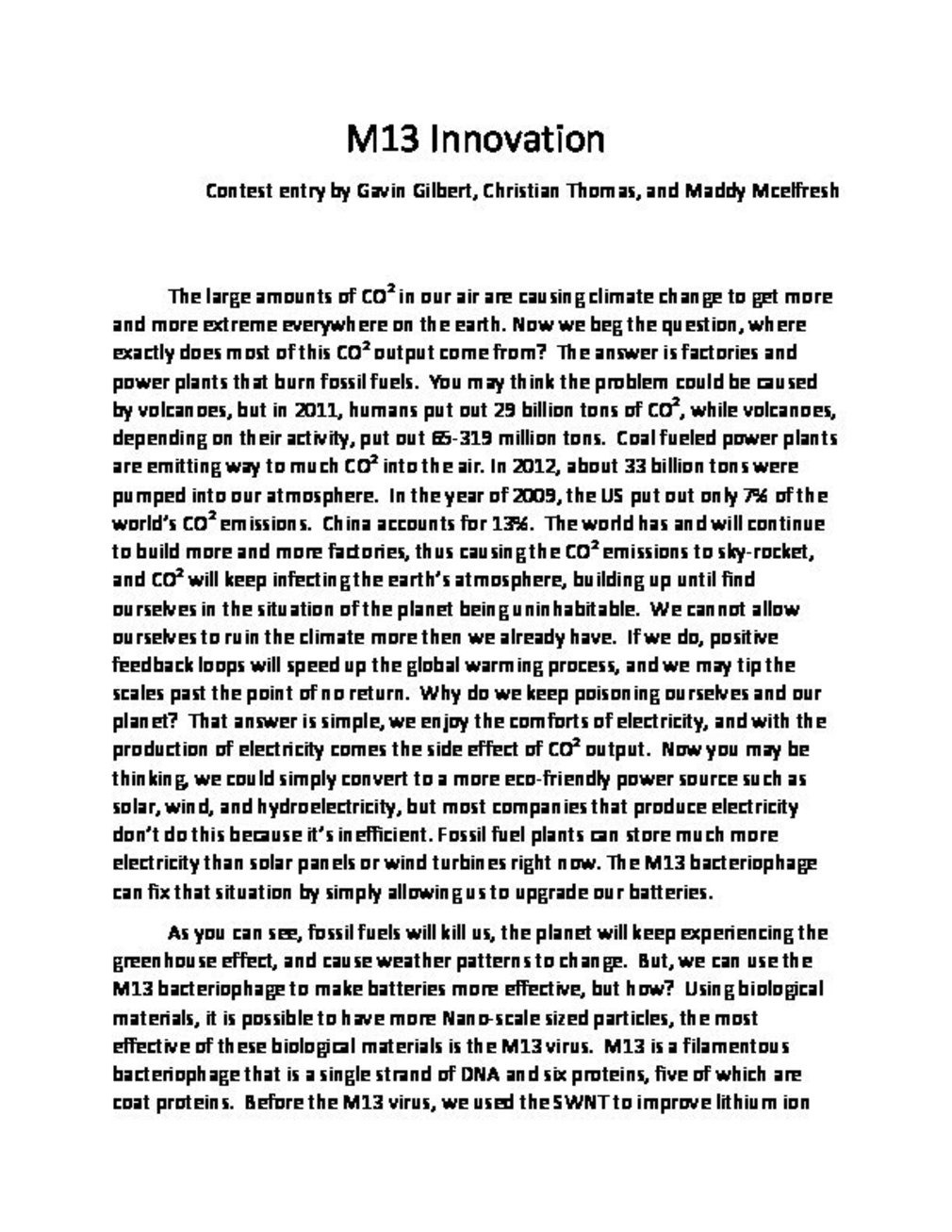Interesting idea! Have you talked with anyone who’s worked with this technology?
Judges’ Queries and Presenter’s Replies
Presentation Discussion
-

-

Not really, but we have read many documentaries and lab reports from people testing this new technology.
-

Great job! I really enjoyed learning about your innovation. I just have one question — does the virus pose any threats to humans or other animals?
-
Further posting is closed as the event has ended.




Arturo Gutierrez
Postdoctoral Appointee
An exotic approach, but very unique. Thanks for taking the time to take a non-traditional approach. Do you have a sense on the complexity of preparing the M13 bacteriophage and how that might affect the cost if there is widespread use of it? Sometimes if the process is more complex, the cost becomes a problem in implementing the technology.
Madelyn Mcelfresh
The mutated m13 virus, when air, palladium, and lithium are added, turns into a template for conducting and holding electricity. It can help the battery hold more energy by increasing it’s surface area.This process to create this new battery isn’t expensive. The battery will last longer and withstand more recharges because the virus adds more material to the grids.
Nathan Tompkins
Assistant Director of Research and Education
I think your idea of using biological materials to improve the storage capacity of batteries and the efficiency of power generation is excellent. I have two questions:
1) Have you considered the scalability of using M13 in battery production? Can the bacteriophage be grown fast enough and in large enough quantities to be useful industrially?
2) Do you have an idea of how long a battery using the M13 bacteriophage would last? If this battery was implemented in a cellphone would the battery need to be replaced at some point during the life of the phone?
Madelyn Mcelfresh
We have considered the scalability of using M13 bacteriophage in battery production. The bateriophage can be grown fast enough and in large quatities to be useful industrially. According to the testing that has been recently conducted, by MIT.
To answer your second question, there hasn’t been an exact measurment on how long a batery using M13 bacteriophage will last. However, we now have a general idea how log the battery using M13 bacteriophage will last. A battery using M13 bacteriophage will last 2-3 times longer than a lithium air battery.
Daniel Jones
Teacher (retired)
Since the M13 bacteriophage is a recent discovery what sort of progress has been made in actually using it in batteries? Even in a one-off lab situation, what has it been able to do as of now?
Madelyn Mcelfresh
The M13 bacteriophage is a recent dicovery, so far only expirements and tests has been ran on the M13 baceriophage. So far we have been able to discover that the M13 bacteriophage does add the material to the grid, causing it to store and create more energy.
Stephanie Luff
Graduate Research Assistant
If the M13 virus added to batteries increases their efficiency in generating energy, how is this going to help is storing the energy (from my understanding, generating renewable energy and storing it are two different problems)?
Madelyn Mcelfresh
The mutated m13 virus, when air, palladium, and lithium are added, turns into a template for conducting and holding electricity. It can help the battery hold more energy by increasing it’s surface area. The battery will last longer and withstand more recharges because the virus adds more material to the grids.The M13 bacteriophage generates more energy and stores more energy, by adding more material to the grids.